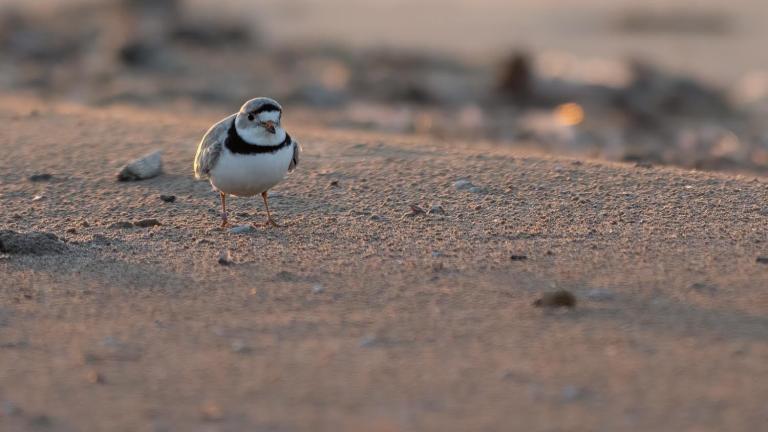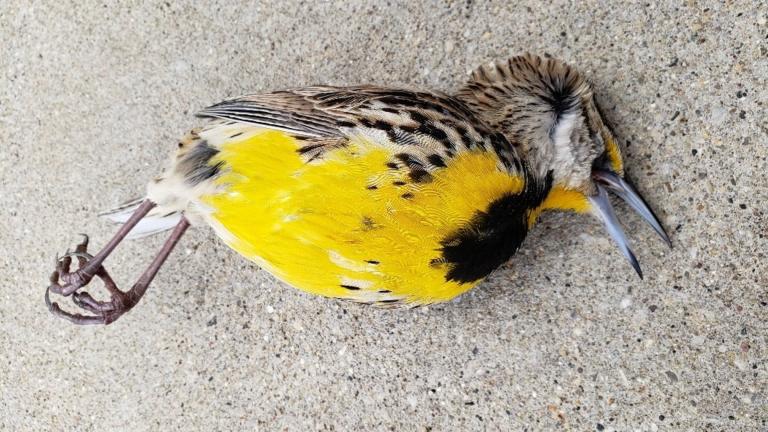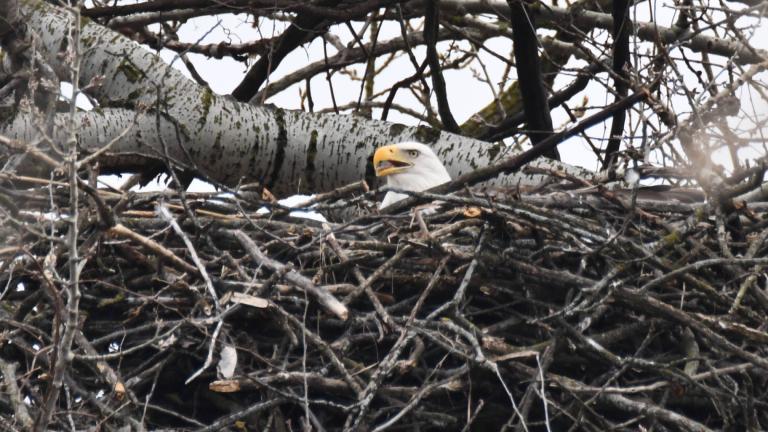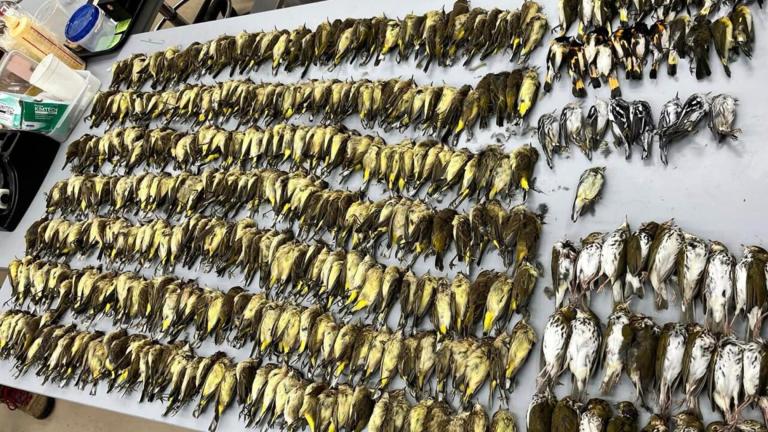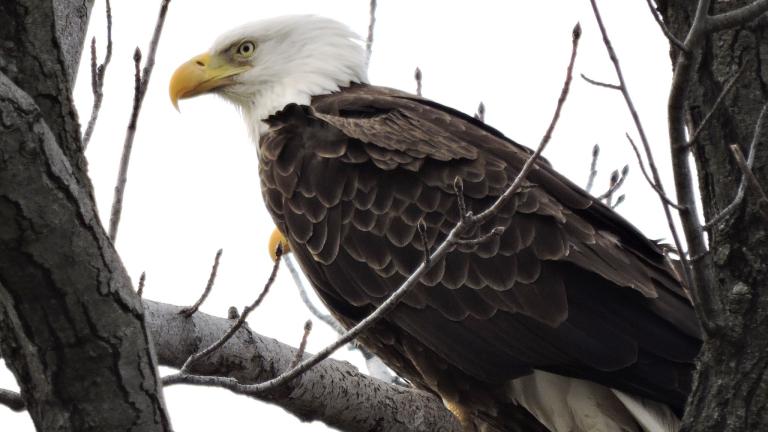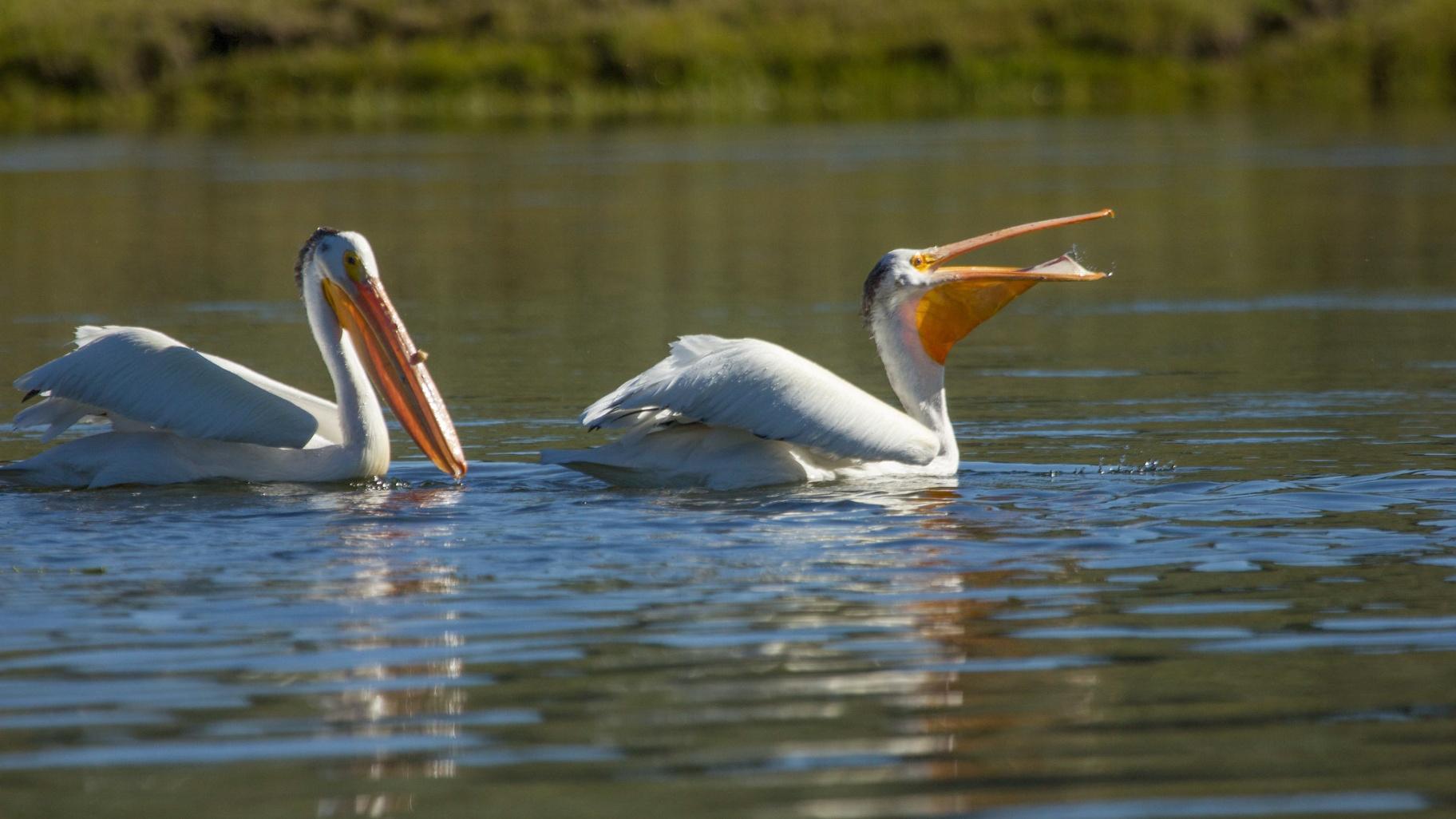 American white pelicans make a twice yearly appearance in Will County during fall and spring migration. (Diane Renkin / National Park Service)
American white pelicans make a twice yearly appearance in Will County during fall and spring migration. (Diane Renkin / National Park Service)
Twice a year, Will County looks more tropical than Midwestern when hordes of pelicans drop by Channahon for a semi-annual migratory pit stop.
The Forest Preserve District of Will County is celebrating the birds’ fall arrival during Saturday’s Pelican Watch event, 11 a.m. to 3 p.m. at Four Rivers Environmental Education Center.
The center is located at the confluence of the Des Plaines and DuPage Rivers, and it’s this luck of geography that’s made the site so popular with pelicans. The birds love the shallow waters, loaded with fish for them to gorge on as they bulk up for the long flight to their winter grounds along the Gulf Coast and further south.
The Chicago area is on the easternmost edge of the pelican’s migratory range, which makes their appearance at Four Rivers a rare treat. As many as 900 pelicans have converged on the center at once, though 150 is a more typical number, according to forest preserve staff.
“These unusual birds are a sight to see with their oversized bills, large wingspan, and beautiful white-and-black feathers,” said Alexis Lyons, a Forest Preserve interpretive naturalist. “We are fortunate that hundreds of these fascinating birds gather here at Four Rivers. This unique experience is worth sharing with everyone at our Pelican Watch event!”
Guides will lead attendees on hikes to pelican hotspots, among other activities. No registration is required.
Here are some fun facts about these intriguing creatures.
Big Mouth
Pelicans use their stretchy throat pouches (technically called a gular pouch) as a scoop, opening wide to fill up with water — holding as much as three gallons — and fish. When they lift their beaks, the water drains and they swallow the fish whole.
If you’ve ever noticed a pelican shaking their pouch, it’s one of the bird’s tricks to keep cool. Pelicans are prone to overheating in the sun and the fluttering gular creates a bit of a breeze, evaporating the water in their mouths and allowing heat to escape via nearby blood vessels.
Wing-Tipped
 (Skeeze / Pixabay)
(Skeeze / Pixabay)
American white pelicans, not be be confused with the the brown pelicans that live year-round along the southern coast of the U.S., are known for their black-tipped white wings.
The black is most noticeable when the birds spread their wings, which reach an impressive span of 8 to 10 feet, second only to the California condor.
Bumpy Beaks
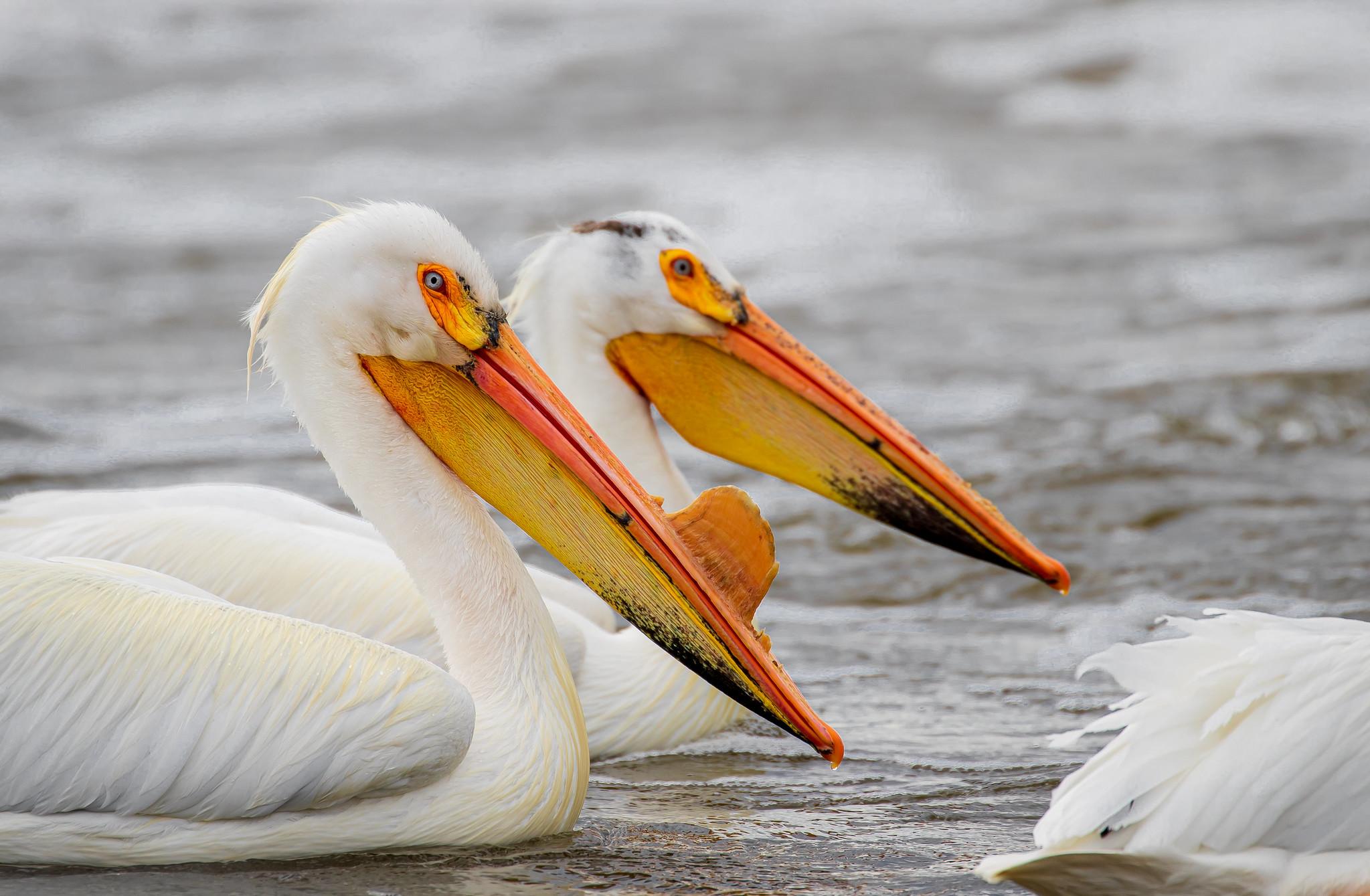 Mike Budd / U.S. Fish & Wildlife Service Midwest Region)
Mike Budd / U.S. Fish & Wildlife Service Midwest Region)
Pelicans’ beaks are already pretty remarkable, measuring more than a foot long, with a hooked tip, all the better for gripping slippery fish.
But during mating season, things get even weirder. Both males and females (as long as they’re at least 3 years old) grow humps on the tops of their beaks, called nuptial tubercles. The humps fall off at the end of breeding season.
Strength in Numbers
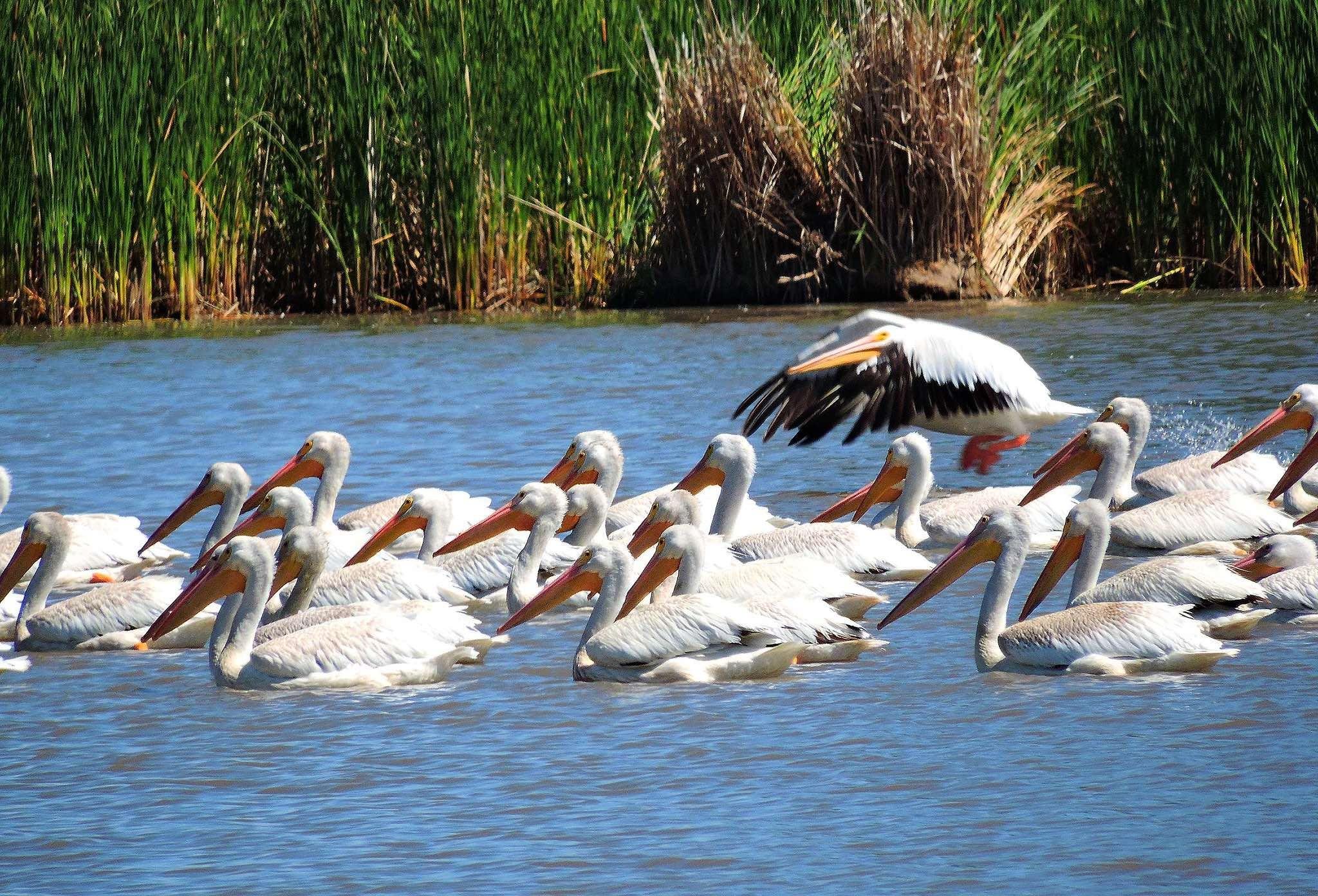 (Patrick Myers / National Park Service)
(Patrick Myers / National Park Service)
Keep an eye on the birds as they feed.
You might catch them stealing fish from each other. On the flip side, they also frequently hunt as a group, swimming in the same direction as a flock and using their bills and wings to “herd” fish toward shore where they easily scoop up a tasty meal.
Contact Patty Wetli: @pattywetli | (773) 509-5623 | [email protected]

